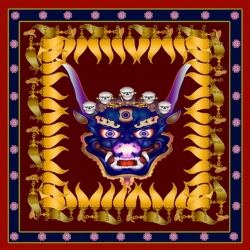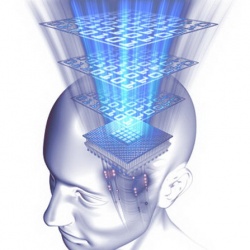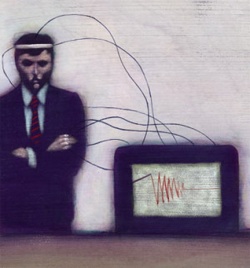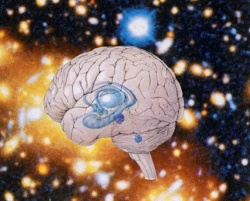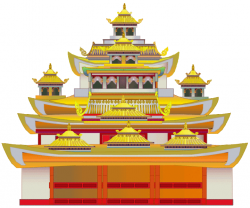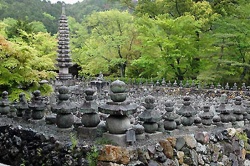Buddhism from Korea had spread to Japan
Buddhism from Korea had spread to Japan in 552 or 538 AD, at the start of the Gregorian calendar, when King Kudara dedicated a Sakyamuni statue made in bronze, together with a number of scriptures and religious objects to Emperor Kim Mei. After about 50 years after the first official entry of Buddhism. Prince Shotoku Taishi became King (574-622 AD). He had built many beautiful monasteries in Nara and its vicinity. Among them was the Horyyuji monastery, which still exists today.
The prince was a scholar who wrote explanations for many scriptures such as the Pundarika, Srimala, and Vimalakirti Sutras. At that time, Buddhism had not been clearly divided into many sects as today. Six Schools of Buddhism were introduced in Japan and flourished during the Nara period. They were Abhidharma- Koram Satya-Siddhi, Hosso Shu (Fa- Siang- Tsoung), Sanronshu (San- Lun-Tsoung), and Kegonshu (Hoa- Yen- Tsoung). The schools provided a forum for learning literature, philosophy, science, religion and culture. As such, they were regarded as an endless treasure that motivated all artistic activities.
The Buddhist monasteries were managed by monks and financed by the imperial court. They served as schools, hospitals, pharmacies, orphanages and nursing homes. The growth of Buddhism in its initial stage had been nurtured with such a high cost that, by the 8th century it became a burden to the country. It was partly due to the selfishness of the privileged monks and nuns, and partly due to the importance put on trivial items of display rather than on major issues. Buddhism of Nara started to shift in another direction and soon was replaced by Buddhism of Helan (Peaceful Buddhism).
At the end of the 8th century AD, King Kwammu moved his capital from Nara to Tokyo. Contrary to the old tradition, he left all monasteries, sanctuaries and shrines in Nara, and established new ones on the mountain of Hiei, south of Tokyo. The new leaders of Buddhism, Dengyodaishi and Kukai then entered the arena as the two brightest and biggest stars. Secret Buddhism began to flourish. Secret Buddhism in Japan Two prominent people, Dengyodaishi (or Saicho) and Kukai (Kobo Kaishi) established two important schools of Buddhism. Dengyodaishi transmitted Taimisu from Ten Dai School. Kukai transmitted the doctrines of mystic ritualism from the Vajrayana School in the form of Shingon Buddhism to Toji. Both schools were not much different from each other regarding the doctrine theory.
However, the Shingon sect was more popular and more special on the practical aspect of the doctrine. On the doctrine theory, both sects had the same point of view about Sakyamuni and Mahavairocana and about the application of the doctrine theory in Shinto Religion in Japan. In exploring the relationship of Shinto religion and Buddhism, one must thoroughly understand this point, because the vocabulary used in Shinto religion, such as Ryobu and Ichijtsu, originated from the difference of ideology in these two Secret sects. A. Taimisu Dengyodaishi (767-823 AD) was the first founder of Taimisu. Visitors to Kyoto could easily recognize the mountain Hiei, the highest mountain that stood imposingly at the East of the city. That was where Dengyodaishi established Ten Dai or the Taimisu School of Buddhism. He was among the first Buddhist who had realized the dangers of city life, while many others before him enjoyed it greatly.
He was not just proficient in the complicated philosophy of the Ten Dai School, but was also an excellent student of mystic rituals of the Chinese Secret doctrine and yoga techniques. His ambition was to unify all other Buddhist sects. Vestiges of the new sects of Buddhism in the time of Kamakura could be found on mount Hiei, Dengyodaishi's headquarters. The capital was beside the mountain, yet Dengyodaishi seemed to be separated from the world. The older sects of the Nara Dynasty were rivals to the new leaders, both for sentimental reasons and for the difference in the principles. Dengyodaishi at the Ten Dai School focused on the way of the “One Vehicle” from the Dharma Flower Sutra, while the older conservative sects followed the direction of Yogacara. They disagreed on the merging of the Shravaka, Prateyka-Buddha, and the Bodhisattva vehicles into the One Vehicle doctrine of Dharma Flower Sutra. Dengyodaishi Kukai B.
Secret Buddhism in the East Kukai was considered a dazzling genius with a versatile talent among great men. He was an erudite scholar, a philosopher, an ascetic monk, and a skilled calligraphy artist. He was known to possess many supernatural powers. He had successfully fought off Demons when he was only a Sadi (beginning level of yoga practice). At Murato, he had chased away fierce Dragons that came out from the water by reciting a mantra. It was said that he took the star's light in his mouth and spat out on them. On another occasion, while he was in deep meditation in a hut he himself had built, evil spirits appeared and were rendered powerless when he drew a magic circle and sat in the middle of it. He was known to have created many effective magical circles and yantras from his mind's power.
Kukai's main purpose was to research the Mahavairocana Sutra and Vajrasekhara Sutras, the two important compositions of Shingon sect. In China, he was the disciple of Hui Guo, the 8th patriarch of the Shingon sect and the 1st patriarch of the Secret Sect in Japan. When he came back to Japan, he chose Koyasan to be the capital for the Shingon sect in Japan. He liked having a Buddhist monastery in the mountains, but he still kept a close relationship with the outside world. The Toji monastery in the south of Kyoto was the place that recorded his footsteps whenever he was in the capital. Koyasan, located in a remote area Todai-ji Temple in Nara City Headquarters of Secret East Sect of a small town was harder to reach than Dengyodaishi’s Mt. Hiei. However, it attracted large numbers of pilgrims every year. Eight Tall Mountains surrounding the Summit of Koyosan appears as the eight petaled lotuses in the Garbhadatu Mandala. The Diamond Crown Temple of Kobodaishi in the Center Kukai was born in 744 AD to an aristocratic family.
He was considered highly gifted and was sent to the capital at fourteen to study to become a royal official. At seventeen he succeeded in entering the university, where he studied China's Five Classics and Confucianism. He was not impressed with Confucianism and went on to study Taoism on his own. He found that Lao Tsu has a deep understanding of secret subjects. He yearned to understand both the Buddhist scriptures and the world, and to reach the hidden, unknown secret of the Buddha’s mind, as well as the mystery surrounding human being’s nature. He intuitively felt that there were always two sides to everything: the external and the internal, the esoteric and the exoteric, the obvious and the hidden, and that the Buddha's mind belongs to that same principle. He knew that the enlightened were the ones who already stood on the internal side.
Although their power was great, it was not enough to liberate mankind. Therefore, they used Dharani and ritual ceremonies to bring the miraculous wonders of the universe into every one’s heart. At the age of 24, Kukai became enlightened as a result of meditation and the practice of contemplation. Once he was in Samadhi, Buddha appeared to him. The Magic Circle In 804 AD, he went to China to be initiated and became the next link in the lineage of founders that followed Mahavairocana Buddha.
When he first met with Hui Guo, the 7th founder of the Shingon sect, the latter told him: “I have long known you would come. For such a long time I have waited for you!” Four months later, Kukai received the Abhisekha ceremony from Hui Guo. Hui Guo said: “Mahavairocana had transmitted this to Vajrapani. Keikna Vajrapani had transmitted to Nagarjuna, and so on down to me. I noticed that you deserve to receive the Dharma, so I transmit it to you so you can save the people in your country.” In the year 806 AD, Kukai went back to Japan. With the encouragement of the King, he established a monastery at Koyasan and preached the Shingon doctrine.
He was very active in preaching and in helping people and became eminently popular. In 835 AD, knowing that his religious mission had been fulfilled, Kukai sat in meditation and passed away. Today in Japan, Shingon has more than 10,000 monasteries, and thousands of followers most of whom belong to the upper intellectual classes. The associate branches of this sect, including Taimisu, have two universities and two high schools. Every year they organize hundreds of charityworks and promote donations.
In Japan, the upper intellectual classes practiced Esoteric Buddhism. Ceylon, Siam, Cambodia, Indonesia, Malaysia, and Thailand belong to the Theravada or Southern Buddhism. The Buddhist scriptures recorded that Buddhism from India had already spread to Ceylon during the dynasty of King Ashoka. Ashoka organized a series of missions to the kingdoms of south Ceylon, Syria, Egypt, Macedonia and Burma. The King's son, Prince Mahendra led the mission to Ceylon. He brought three volumes of Sutras to be translated by famous teachers. At that time, Secret Buddhism also spread to South East Asia. The people in South East Asia took the Secret Buddhism learning very seriously. History recorded that Amoghavajra met Vajrabodhi and became his disciple in Malaysia in 720 AD.
This tells us that teachers from India had spread Secret Buddhism to South East Asia, China and Tibet, in the same era. The quantity of Sutras in South East Asia was as many as in China and Tibet. Most Buddhist monks practiced Secret Buddhism in Siam, Burma, Laos and Cambodia. The majority of them became famous and was respected for their spiritual powers. Some attained a superior spiritual power that was well known and had become legendary.
In Vietnam, following the Dinh, Le, Ly and Tran dynasties, the Vietnamese monasteries did not have a master of Esoteric Doctrine therefore the line of transmission has been broken. In the year 1928 AD, the elder monk Khanh Hoa had brought three 'baskets' of scriptures to Vietnam from China and Japan. However, until 1970, there were only scattered translations of the esoteric teachings. In every temple, Buddhist monks routinely recited the Great Compassion and the
Ten Good Deeds Dharani Sutra at 4:00 am, noon and evening time. These are the major Sutras of Secret Esoteric Buddhism. Buddhist monks in Vietnam as well as in Japan always began their reciting session with the Great Compassion Sutra, which was the most important Dharani in Secret Buddhism. This Sutra was from the “Thousand Arms and Eyes Great Compassion Dharani”. Vietnamese Buddhists also recite it. However, when asked about Secret Esoteric Buddhism, no one seems to know anything about it. Surprisingly even among the Buddhist masters, who recite Dharani daily, there are few who understand Secret Buddhism Doctrine. This has resulted in prejudice and misunderstanding about the esoteric doctrine.
Occasionally, there were a few monks who practiced the Secret Buddhism without ever having the traditional transmission of the doctrine through initiation (Abhisekha). Thanks to their religious commitment they were able to obtain the spiritual powers from the Bodhisattvas and thereby fulfilled their vow for saving people. They were able to perform magic and convert people. They were worthy of enjoying the peaceful Dharma for themselves, but were not able to transmit it to the disciples.
Therefore, Secret Buddhism in Vietnam remains hidden but for a few select individuals. In the recent past, there were a few well-known monks holding a special status in Vietnam who practiced Secret Buddhism. For example, Venerable Thich Vien Duc had received the secret seal from Masters Van An and Tu Thanh in Phu Yen. He practiced the doctrine and attained spiritual powers. He was famous for using yantras to cure heart disease and for other miraculous works. He was credited with translating the chapters on Secret Buddhism from the Chinese Great Store Sutra and promoting them. The study of Secret Buddhism Doctrine began to flourish through the daring publication of the following Secret scriptures in Vietnamese:
Thoroughness in Exoteric and Secret Sutra
Chun Ti Dharani Sutra
Mahayana Precious Solemn King Sutra
Great Precious Wisdom-Heaven palace pillars
One Word Dharani for the ending stage of the Doctrine
Secret Dharani Sutra
The precious Mudra Dharani
The Unisha Vijaja Dharani Sutra and a number of other important sacred books especially one called “Secret East” that was compiled from over 100 Secret Buddhism Sutras. He had in fact contributed many services towards the propagation of the philosophy and theories of Secret Buddhism for the Vietnamese people. However, due to the lack of traditional Abhisekha transmission, Secret Buddhism was only known through its theories. Even Venerable Thich Vien Duc himself was not able to transmit the spiritual power he had significantly attained. Venerable Thich Pho Ung is another prominent Buddhist master at Linh Quang Shrine, on Nguyen Khoai Street- district of Khanh Hoi.
He performed exorcism and displayed many supernatural powers everyday for the general public. However, he did not want to preach and impart any theories or applications of the Secret Doctrine. Perhaps he considered Esoteric Doctrine too difficult to practice and should be reserved for chosen monks. Venerable Thich Thien Tam preached Pure Land Buddhism. He also recited the Dharani of Secret Buddhism, and had also obtained significant supernatural powers. Recently he translated and preached a number of esoteric scriptures. However, he too, could not implement all the steps of Abhisekha because of the lack of orthodox coherence. In summary, one cannot rely too much on the Venerable and other Honorable monks that have practiced Esoteric
Doctrine in Vietnam, to teach the practical application of the secret doctrine, or to perform the Abhisekha initiation ceremony. Therefore, even though the practitioner recites the Great Compassion or the Ten Good Deed Dharani, he cannot attain higher aspiration of the Secret doctrine and is not different from a practitioner of the Hinayana School.
Guiding Principles and the Basic Doctrine The teachings of the Secret Dharma were recorded in many different Sutras. All of them composed the Secret Collection that is part of the Great Store Sutra (the Pali Canon), written in Chinese and in other languages. However, the translation from Sanskrit to the Chinese version ordered by the emperor was the most complete and traditional one. Among the many Sutras were three important books that have all the principles of the doctrine and serve as basis for the esoteric school. - The Mahavairocana Sutra was mostly about Mandalas. It was popular in southern India and was the basis for the Garbhadhatu sect.
- The Vajrasekhara Sutra was popular in the Eastern regions, and was the basis for the Vajradhatu sect. - The Supreme Enlightenment Sutra teaches Dharani, the altar's rules and regulations to attain enlightenment. In addition, hundreds of scriptures on Secret Buddhism were summed up in the Secret Scriptures over thousands of years. The scriptures emphasize the practice and the magical power of Dharani, while saying little about its theories. Some of the scriptures include the Secret Store Dharani, Five Words Dharani Sutra, Great Support for the King, Great Compassion Dharani]], Subahuh the Pilgrim, Permanent and Solemn Seed of Dharani, Recitation for the Ultimate Winner, One Word Dharani, Six Sacred
Words, and the Samantabhadra Dharani. To have a general understanding of the secret doctrine, it is best to consult the two major books: Mahavairocana Sutra and Vajrasekhara Sutra. It is also necessary to review the complete set of Sutras in the Secret Buddhism collection.
I. The Mahavairocana and Vajrasekhara Secret Buddhism Sutras: The Mahavairocana’s formal title is “The Meditation for Attaining the Buddha's Body in Five Aspects.” It is composed of seven books, translated from Sanskrit to Chinese by both Subhakarasimha and Ichigyo during the Tang Dynasty. The Vajrasekhara stands for “Sutra of the King of the Great Teaching Attested to in Mahayana Bearing the Truth of All the Buddhas at the Vajra Peak”. It is composed of three books translated by Amoghavajra. These two Sutras theoretically explain the truth and the real nature of the following principles: The Six Primary Elements, The Four Mandalas, The Three Mysteries and The Ten Stages of the Mind.
1. The Six Primary Elements Secret Buddhism advocated that the Six Primary Elements form the real nature of the cosmos. They are: Earth, Water, Fire, Wind, Space, and Consciousness. They have the ability to reproduce and expand. The first five elements belong to inanimate things. The last one belongs to the mind. The six elements interpenetrate without obstruction and in eternal unionto create different laws.
